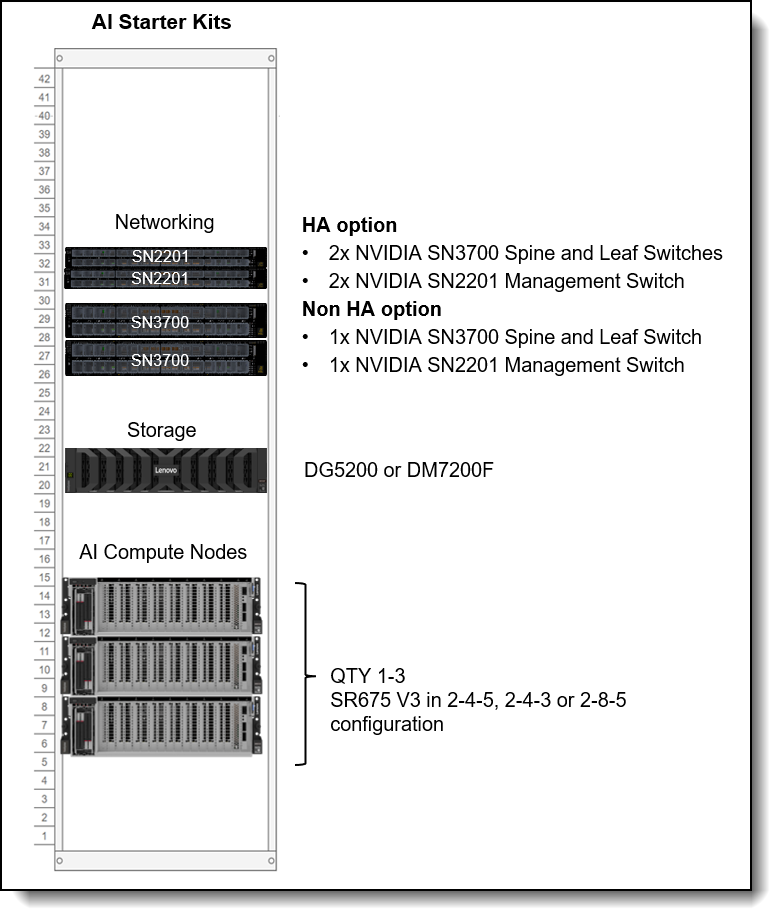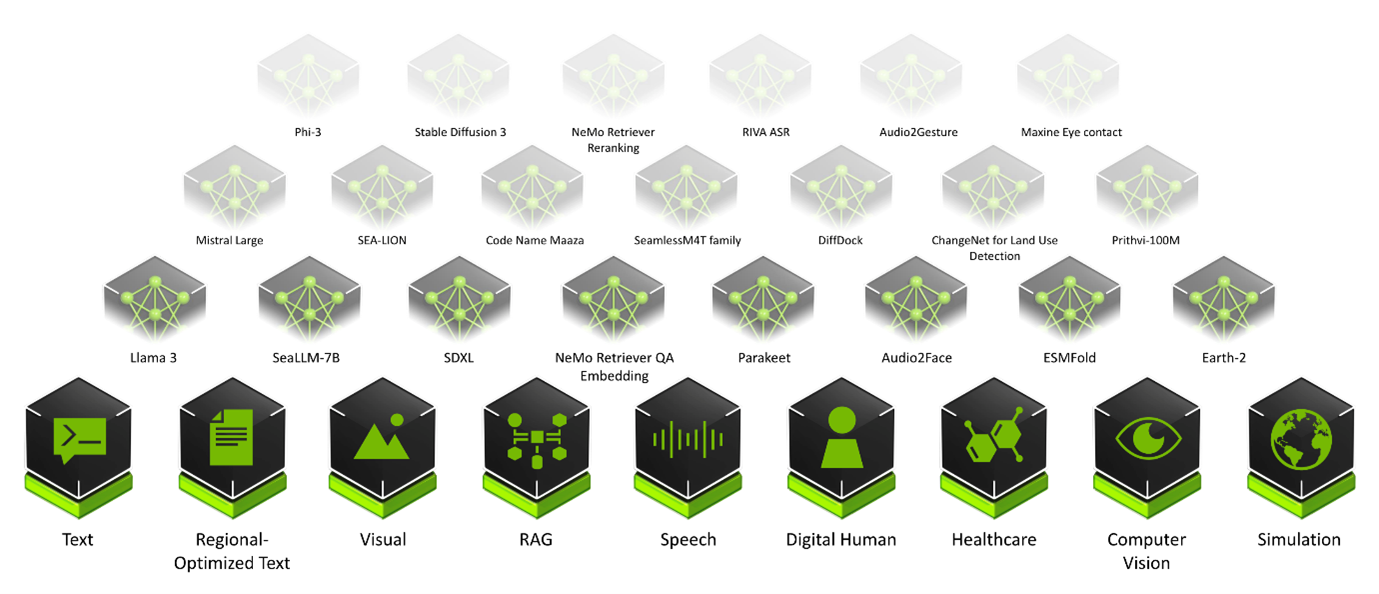Updated
19 May 2025Form Number
LP2181PDF size
38 pages, 4.6 MBAbstract
Lenovo Hybrid AI 285 is a platform that enables enterprises of all sizes to quickly deploy hybrid AI factory infrastructure, supporting Enterprise AI use cases as either a new, greenfield environment or an extension of their existing IT infrastructure. The offering is based on the NVIDIA 2-8-5 PCIe-optimized configuration — 2x CPUs, 8x GPUs, and 5x network adapters — and is ideally suited for medium (per GPU) to large (per node) Inference use cases, and small-to-large model training or fine-tuning, depending on chosen scale.
Lenovo Hybrid AI 285 combines market leading Lenovo ThinkSystem GPU-rich servers with NVIDIA Hopper or Blackwell GPUs, NVIDIA Spectrum X networking and enables the use of the NVIDIA AI Enterprise software stack with NVIDIA Blueprints for seamless setup and management.
The latest platform addition to the Lenovo Hybrid AI Advantage™ with NVIDIA includes the new NVIDIA RTX PRO 6000 Blackwell Server Edition GPU in both 2U and 3U form factors providing a new generation of compact, scalable enterprise AI infrastructure that’s accessible, reliable, and a scalable entry point into the world of AI-accelerated innovation. Lenovo’s ThinkSystem SR650a V4 and SR675 V3 servers and the cutting edge NVIDIA RTX PRO 6000 Blackwell Server Edition GPU come together to deliver unparalleled AI performance, scalability, and efficiency with a mini footprint.
This guide is for sales architects, customers and partners who want to quickly stand up a validated AI infrastructure solution.
Change History
Changes in the May 19, 2025 update:
- Added NVIDIA RTX PRO 6000 Blackwell Server Edition GPU
- Added AI Starter Kit sizing including description of the ThinkSystem DM and ThinkSystem DG products
Introduction
The evolution from Generative AI to Agentic AI has revolutionized the landscape of business and enterprise operations globally. By leveraging the capabilities of intelligent agents, companies can now streamline processes, enhance efficiency, and maintain a competitive edge.
These AI agents are adept at handling routine tasks, allowing skilled employees to focus on strategic initiatives and areas where their expertise truly adds value. This symbiotic relationship between AI agents and human employees fosters a collaborative environment that drives innovation and success.
Enterprises must proactively identify opportunities where AI agents can be integrated to support their operations, ensuring they remain agile and effective in an ever-evolving market. This new foundation of AI-driven optimization not only boosts productivity but also empowers employees to contribute more meaningfully to the organization's vision and goals.
Lenovo Hybrid AI 285 is a platform that enables enterprises of all sizes to quickly deploy hybrid AI factory infrastructure, supporting Enterprise AI use cases as either a new, greenfield environment or an extension of their existing IT infrastructure.
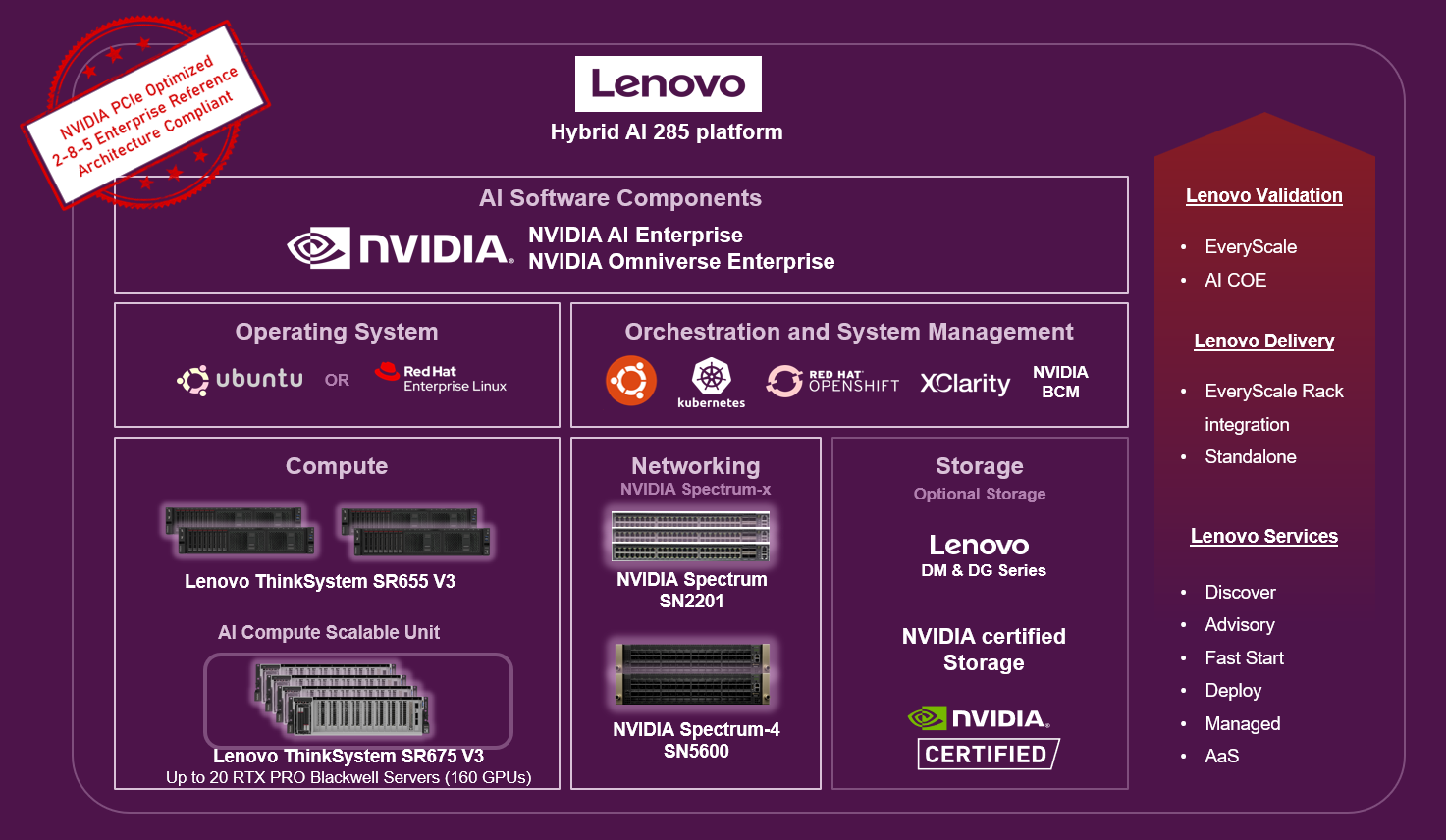
Figure 1. Lenovo Hybrid AI 285 platform overview
The offering is based on the NVIDIA 2-8-5 PCIe-optimized configuration — 2x CPUs, 8x GPUs, and 5x network adapters — and is ideally suited for medium (per GPU) to large (per node) Inference use cases, and small-to-large model training or fine-tuning, depending on chosen scale. It combines market leading Lenovo ThinkSystem GPU-rich servers with NVIDIA Hopper or Blackwell GPUs, NVIDIA Spectrum X networking and enables the use of the NVIDIA AI Enterprise software stack with NVIDIA Blueprints.
Following the principle of From Exascale to EveryScale™, Lenovo, widely recognized as a leader in High Performance Computing, leverages its expertise and capabilities from Supercomputing to create tailored enterprise-class hybrid AI factories.
Ideally utilizing Lenovo EveryScale Infrastructure (LESI) it comes with the EveryScale Solution verified interoperability for the tested Best Recipe hardware and software stack. Additionally, EveryScale allows Lenovo Hybrid AI platform deployments to be delivered as fully pre-built, rack-integrated systems that are ready for immediate use.
Did you know?
The same team of HPC and AI experts that stand behind the Lenovo EveryScale OVX solution, as deployed also for NVIDIA Omniverse Cloud, brings the Lenovo Hybrid AI 285 platform to market.
Following their excellent experience with Lenovo on Omniverse, NVIDIA has once again chosen Lenovo technology as the foundation for the development and test of their NVIDIA AI Enterprise Reference Architecture (ERA). This choice ensures complete alignment and an exact match of Lenovo Hybrid AI 285 platform with the NVIDIA 2-8-5-200 ERA specifications.
Overview
The Lenovo Hybrid AI 285 Platform scales from a single server with just 4 GPUs as an entry environment to a rack Scalable Unit (SU) with four servers and 32 GPUs to up to 5 Scalable Units with 20 Servers and 160 GPUs.
This scaling process is shown in the following two figures.
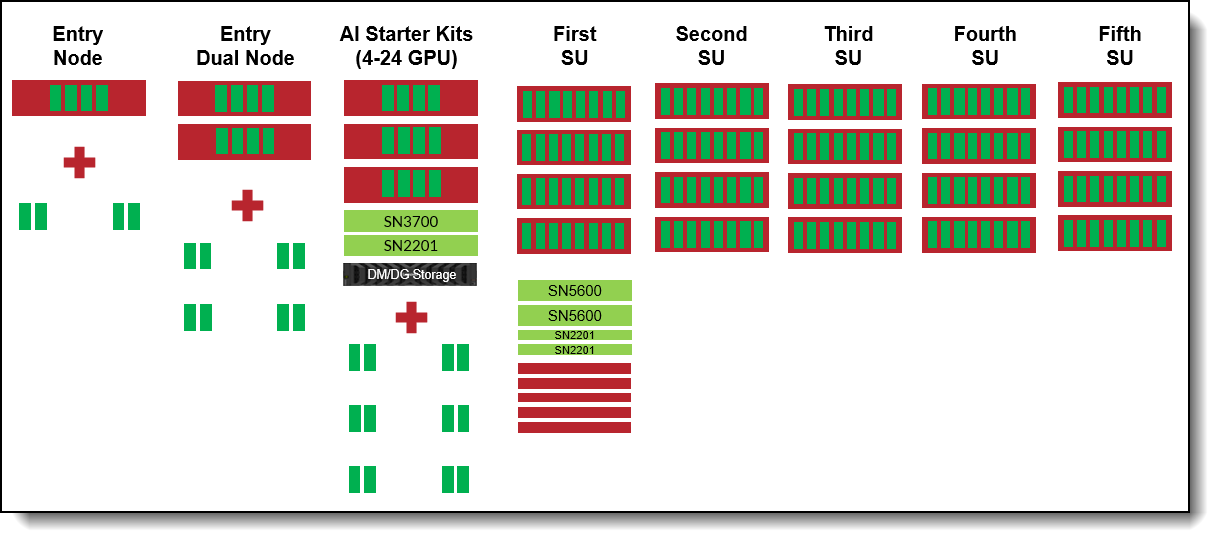
Figure 2. Lenovo Hybrid AI 285 Scaling from entry to 160 GPUs
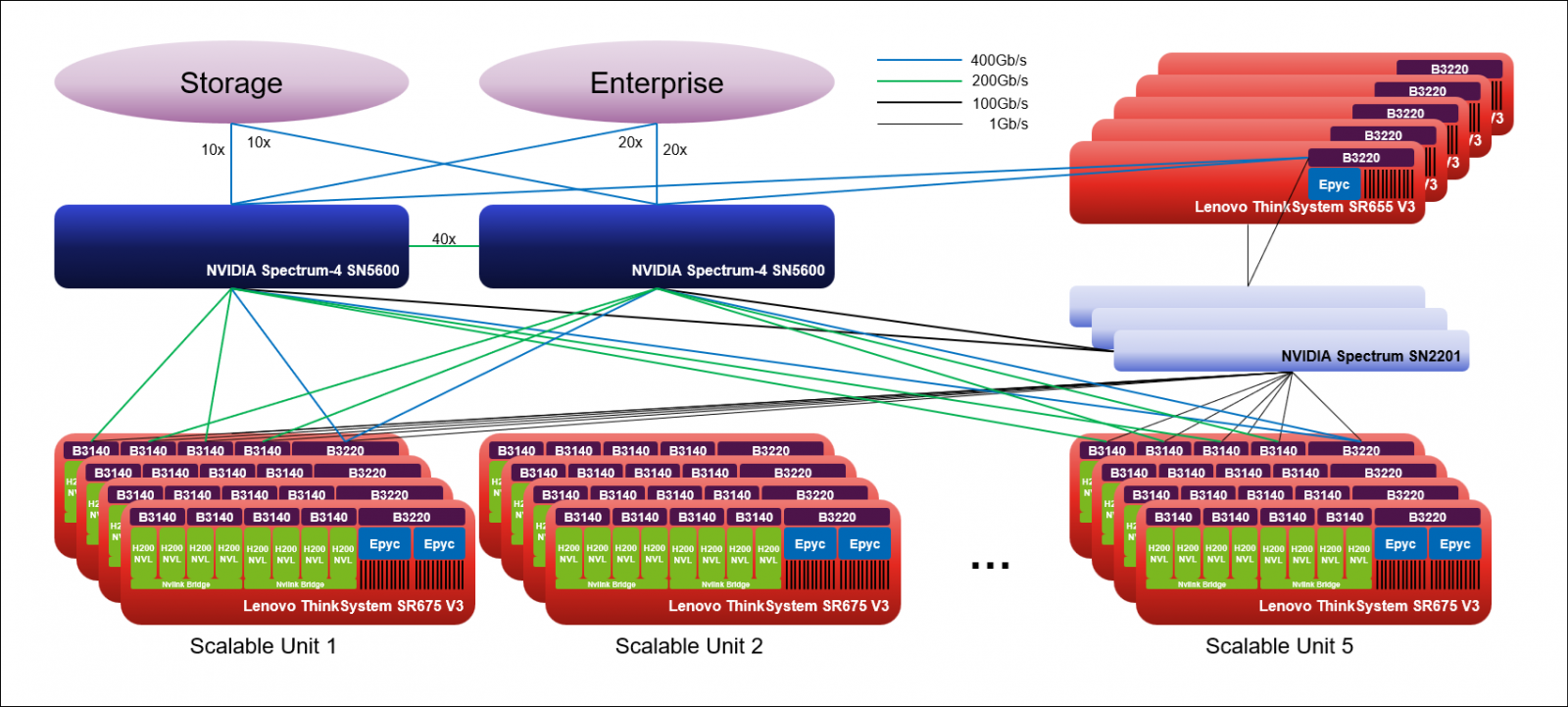
Figure 3. Lenovo Hybrid AI 285 platform with 5 Scalable Units
It can be deployed even for larger sizes with up to 8 Scalable Units with 32 Servers and 256 GPUs by breaking using two more SN5600s to create a dedicated E/W network for GPU to GPU communication.
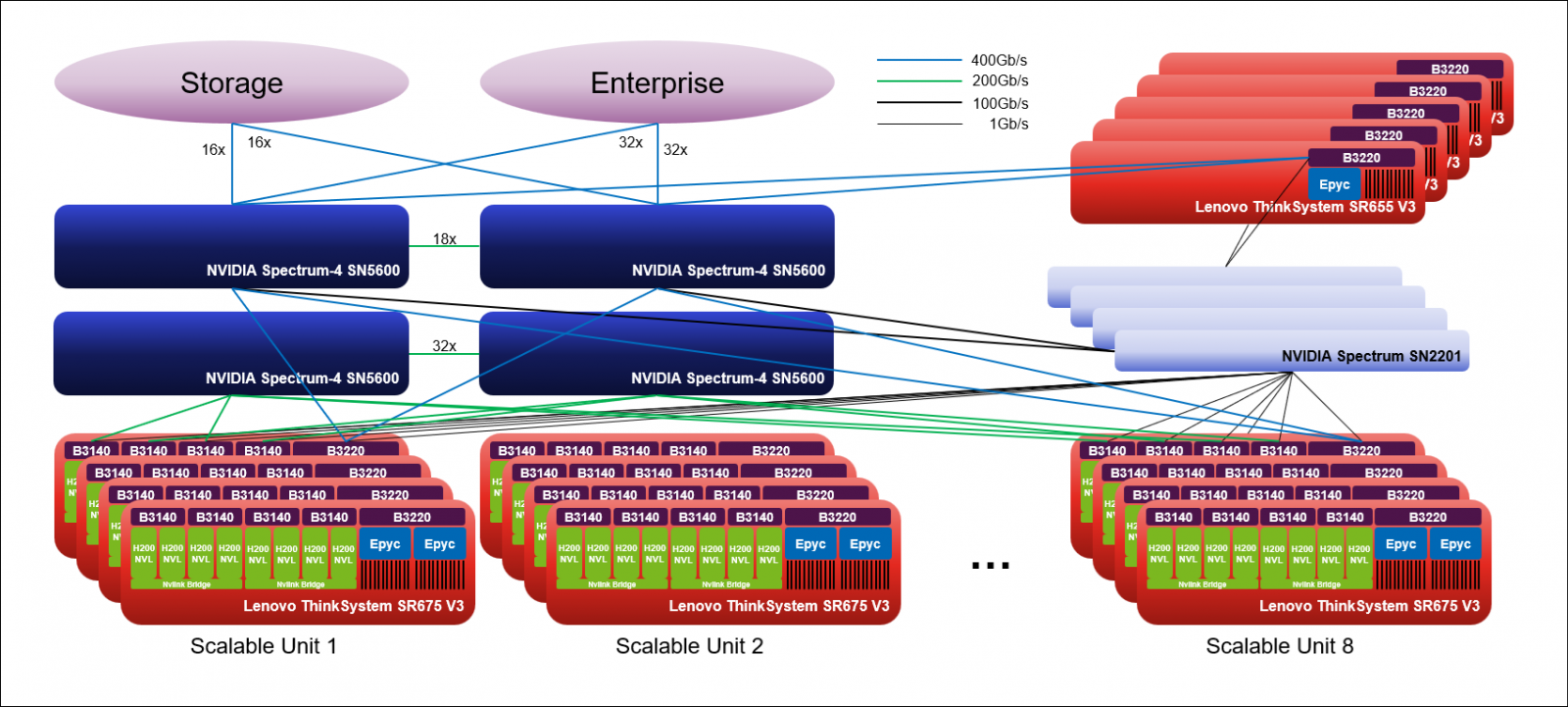
Figure 4. Lenovo Hybrid AI 285 platform with 8 Scalable Units
Components
The main hardware components of Lenovo Hybrid AI platforms are Compute nodes and the Networking infrastructure. As an integrated solution they can come together in either a Lenovo EveryScale Rack (Machine Type 1410) or Lenovo EveryScale Client Site Integration Kit (Machine Type 7X74).
Topics in this section:
AI Compute Node – SR675 V3
The AI Compute Node leverages the Lenovo ThinkSystem SR675 V3 GPU-rich server.

Figure 5. Lenovo ThinkSystem SR675 V3 in 8DW PCIe Setup
The SR675 V3 is a 2-socket 5th Gen AMD EPYC 9005 server supporting up to 8 PCIe DW GPUs with up to 5 network adapters in a 3U rack server chassis. This makes it the ideal choice for NVIDIA’s 2-8-5 configuration requirement.
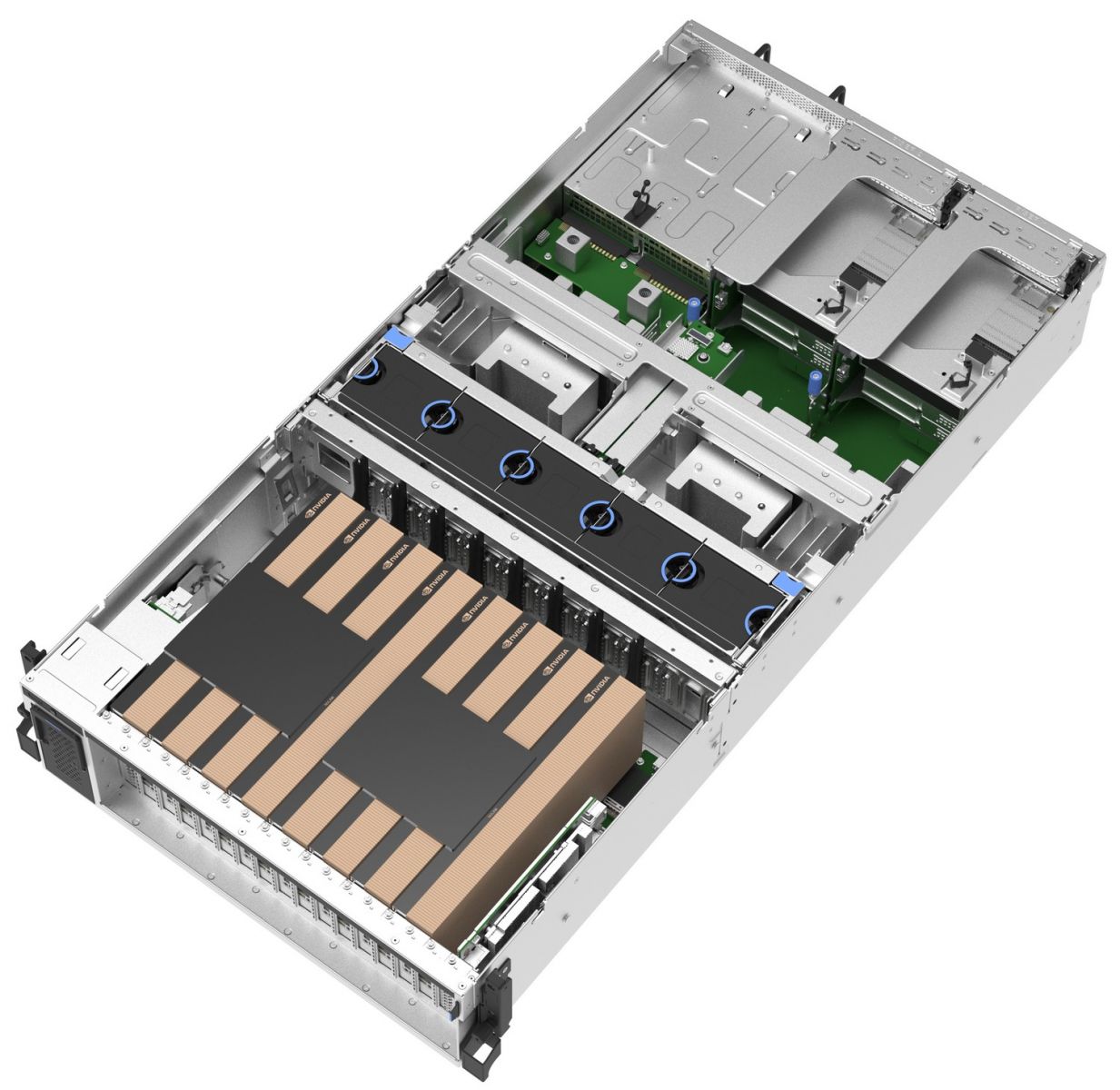
Figure 6. Lenovo ThinkSystem SR675 V3 in 8DW PCIe Setup
This configuration is NVIDIA-certified for Enterprise as well as Spectrum-X and an evolution of the Lenovo EveryScale OVX 3.0 setup which NVIDIA also deployed based on the Lenovo ThinkSystem SR675 V3 within NVIDIA Omniverse Cloud on Microsoft Azure.
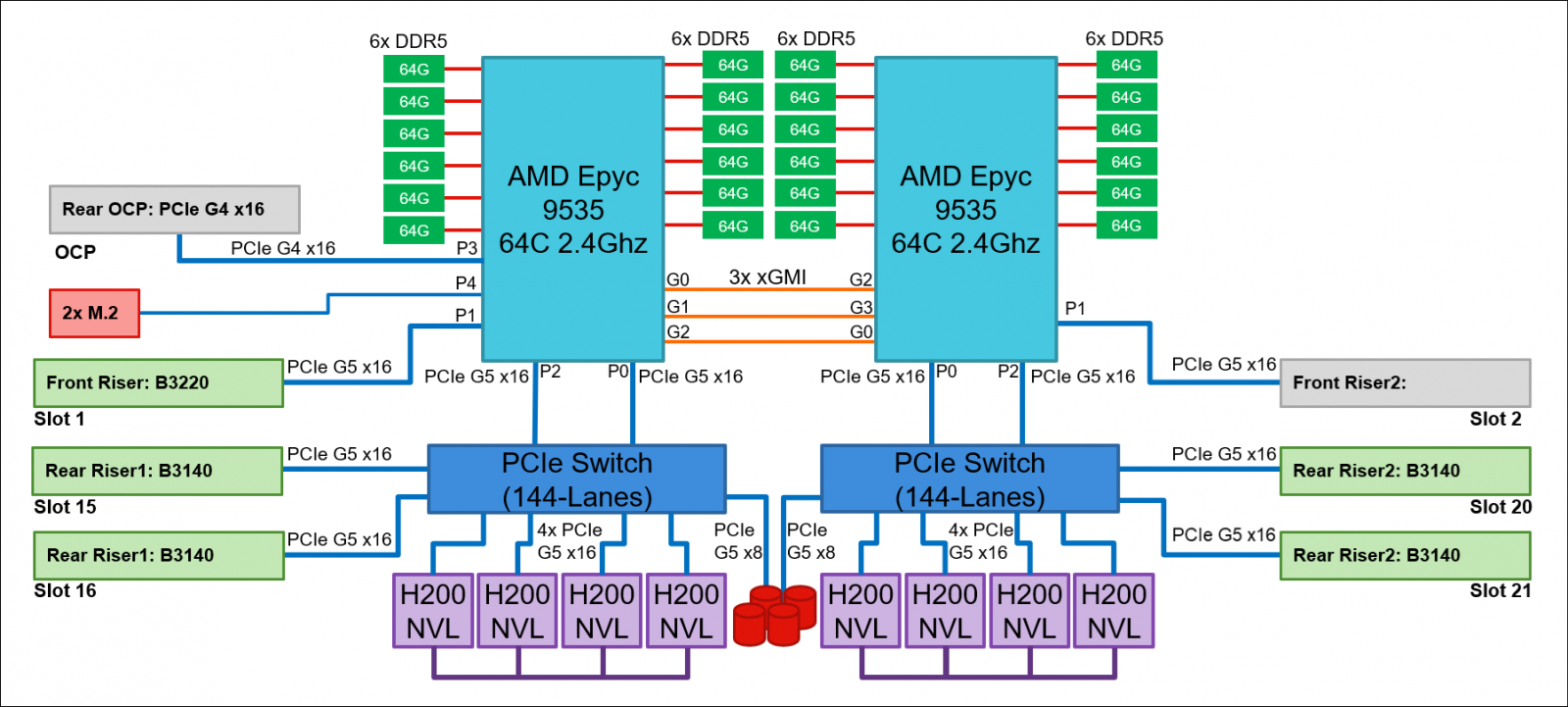
Figure 7. AI Compute Node Block Diagram
The AI Compute node is configured with two AMD EPYC 9535 64 Core 2.4 GHz processors with an all-core boost frequency of 3.5GHz. Besides providing consistently more than 2GHz frequency this ensures that with 7 Multi Instance GPUs (MIG) on 8 physical GPUs there are 2 Cores available per MIG plus a few additional Cores for Operating System and other operations.
With 12 Memory Channels per processor socket the AMD based server provides superior Memory bandwidth versus computing Intel-based platforms ensuring highest performance. Leveraging 64GB 6400MHz Memory DIMMs for a total of 1.5TB of main memory providing 192GB memory per GPU or a minimum of 1.5X the H200 NVL GPU memory.
The GPUs are connected to the CPUs via two PCIe Gen5 switches, each supporting up to four GPUs. With the NVIDIA H200 NVL PCIe GPU, the four GPUs are additionally interconnected through an NVLink bridge, creating a unified memory space. In an entry configuration with two GPUs per PCIe switch, the ThinkSystem SR675 V3 uniquely supports connecting all four GPUs with an NVLink bridge for maximized shared memory, thereby accommodating larger inference models, rather than limiting the bridge to two GPUs. With the RTX PRO 6000 Blackwell Server Edition, no NVLink bridge is applicable.
In the platforms default configuration, the AI Compute node leverages NVIDIA BlueField technology both for the North-South as well as the East-West communication.
For Converged (North-South) Network an Ethernet adapter with redundant 200Gb/s connections provides ample bandwidth to storage, service nodes and the Enterprise network. The NVIDIA BlueField-3 B3220 P-Series FHHL DPU provides the two 200Gb/s Ethernet ports, a 1Gb/s Management board and a 16-Core ARM chip enabling Cloud Orchestration, Storage Acceleration, Secure Infrastructure and Tenant Networking.
The Ethernet adapters for the Compute (East-West) Network are directly connected to the GPUs via PCIe switches minimizing latency and enabling NVIDIA GPUDirect and GPUDirect Storage operation. For pure Inference workload they are optional, but for training and fine-tuning operation they should provide at least 200Gb/s per GPU.
By using the NVIDIA BlueField-3 B3140H E-Series HHHL DPU or alternatively a ConnectX8 400Gbit Ethernet adapter in combination with NVIDIA Spectrum 4 networking the East-West traffic can utilize Spectrum X operation.
For deployments that plan to remain below 24 GPUs, Spectrum-4 switching may be excessive; in this case a SN3700V or another 200/400GbE can be used in its place. This will remove the ability for the customer to utilize Spectrum X so the NICs should be switched from Bluefield adapters to dual-port ConnectX-7 adapters (2x 200GbE).
Finally, the system is completed by local storage with two 960GB Read Intensive M.2 in RAID1 configuration for the operating system and four 3.84TB Read Intensive E3.S drives for local application data.
GPU selection
The Hybrid AI 285 platform is designed to handle any of NVIDIA’s DW PCIe form factor GPUs including the new RTX PRO 6000 Blackwell Server Edition, the H200 NVL, L40S and the H100 NVL.
- NVIDIA H200 NVL
The NVIDIA H200 NVL is a powerful GPU designed to accelerate both generative AI and high-performance computing (HPC) workloads. It boasts a massive 141GB of HBM3e memory, which is nearly double the capacity of its predecessor, the H100. This increased memory, coupled with a 4.8 terabytes per second (TB/s) memory bandwidth, enables the H200 NVL to handle larger and more complex AI models, like large language models (LLMs), with significantly improved performance. In addition, the H200 NVL is built with energy efficiency in mind, offering increased performance within a similar power profile as the H100, making it a cost-effective and environmentally conscious choice for businesses and researchers.
NVIDIA provides a 5-year license to NVIDIA AI Enterprise free-of-charge bundled with NVIDIA H200 NVL GPUs.
- NVIDIA RTX PRO 6000 Blackwell Server Edition
Built on the groundbreaking NVIDIA Blackwell architecture, the NVIDIA RTX PRO™ 6000 Blackwell Server Edition delivers a powerful combination of AI and visual computing capabilities to accelerate enterprise data center workloads. Equipped with 96GB of ultra- fast GDDR7 memory, the NVIDIA RTX PRO 6000 Blackwell provides unparalleled performance and flexibility to accelerate a broad range of use cases- from agentic AI, physical AI, and scientific computing to rendering, 3D graphics, and video.
Configuration
The following table lists the configuration of the AI Compute Node with H200 NVL GPUs.
Service Nodes – SR655 V3
When deploying beyond two AI Compute nodes additional Service nodes are needed to manage the overall AI cluster environment.
Two Management Nodes provide a high-availability for the System Management and Monitoring provided through NVIDIA Base Command Manager (BMC) as described further in the AI Software Stack chapter.
For the Container operations three Scheduling Nodes build the Kubernetes control plane providing redundant operations and quorum capability.

Figure 8. Lenovo ThinkSystem SR655 V3
The Lenovo ThinkSystem SR655 V3 is an optimal choice for a homogeneous host environment, featuring a single socket AMD EPYC 9335 with 32 cores operating at 3.0 GHz base with an all-core boost frequency of 4.0GHz. The system is fully equipped with twelve 32GB 6400MHz Memory DIMMs, two 960GB Read Intensive M.2 drives in RAID1 configuration for the operating system, and two 3.84TB Read Intensive U.2 drives for local data storage. Additionally, it includes a NVIDIA BlueField-3 B3220L E-Series FHHL DPU adapter to connect the Service Nodes to the Converged Network.
Configuration
The following table lists the configuration of the Service Nodes.
Networking
The default setup of the Lenovo Hybrid AI 285 platform leverages NVIDIA Networking with the NVIDIA Spectrum-4 SN5600 for the Converged and Compute Network and the NVIDIA SN2201 for the Management Network.
NVIDIA Spectrum-4 SN5600
The SN5600 smart-leaf, spine, and super-spine switch offers 64 ports of 800GbE in a dense 2U form factor. The SN5600 is ideal for NVIDIA Spectrum-X deployments and enables both standard leaf/spine designs with top-of-rack (ToR) switches as well as end-of-row (EoR) topologies. The SN5600 offers diverse connectivity in combinations of 1 to 800GbE and boasts an industry-leading total throughput of 51.2Tb/s.

Figure 9. NVIDIA Spectrum-4 SN5600
The Converged (North-South) Network handles storage and in-band management, linking the Enterprise IT environment to the Agentic AI platform. Built on Ethernet with RDMA over Converged Ethernet (RoCE), it supports current and new cloud and storage services as outlined in the AI Compute node configuration.
The Converged Network connects to the Enterprise IT network with up to 40 Ethernet connections at 200Gb/s for up to five Scalable Units (SU) or 64 Ethernet connections at 200Gb/s for up to eight SUs. This setup guarantees a minimum bandwidth of 25Gb/s per GPU.
In addition to providing access to the AI agents and functions of the AI platform, this connection is utilized for all data ingestion from the Enterprise IT data during indexing and embedding into the Retrieval-Augmented Generation (RAG) process. It is also used for data retrieval during AI operations.
The Storage connectivity is exactly half that and described in the Storage Connectivity chapter.
The Compute (East-West) Network facilitates application communication between the GPUs across the Compute nodes of the AI platform. It is designed to achieve minimal latency and maximal performance using a rail-optimized, fully non-blocking fat tree topology with NVIDIA Spectrum-X.
Spectrum X reduces latency and increases bandwidth for Ethernet by using advanced functionality that splits network packets, tags them, and allows the switch to balance them across network lanes. The receiving node then reassembles the packets regardless of the order they were received in. This process helps avoid hash collusion and congestion, which often lead to suboptimal performance in low-entropy networks.
For cost optimization, alternative networking options can include NVIDIA SN3700 switches and NVIDIA ConnectX-7 NDR200/200GbE NICs instead of NVIDIA BlueField-3 NICs. Additionally, copper cables can replace optical cables to reduce costs
Tip: In a pure Inference use case, the Compute Network is typically not necessary, but for training and fine-tuning operations it is a crucial component of the solution.
For configurations of up to five Scalable Units, the Compute and Converged Network are integrated utilizing the same switches. When deploying more than five units, it is necessary to separate the fabric.
The following table lists the configuration of the NVIDIA Spectrum-4 SN5600.
NVIDIA Spectrum SN2201
The SN2201 is ideal as an out-of-band (OOB) management switch or as a ToR switch connecting up to 48 1G Base-T host ports with non-blocking 100GbE spine uplinks. Featuring highly advanced hardware and software along with ASIC-level telemetry and a 16 megabyte (MB) fully shared buffer, the SN2201 delivers unique and innovative features to 1G switching.

Figure 10. NVIDIA Spectrum SN2201
The Out-of-Band (Management) Network encompasses all AI Compute node and BlueField-3 DPU base management controllers (BMC) as well as the network infrastructure management.
The following table lists the configuration of the NVIDIA Spectrum SN2201.
Lenovo EveryScale Solution
The Server and Networking components and Operating System can come together as a Lenovo EveryScale Solution. It is a framework for designing, manufacturing, integrating and delivering data center solutions, with a focus on High Performance Computing (HPC), Technical Computing, and Artificial Intelligence (AI) environments.
Lenovo EveryScale provides Best Recipe guides to warrant interoperability of hardware, software and firmware among a variety of Lenovo and third-party components.
Addressing specific needs in the data center, while also optimizing the solution design for application performance, requires a significant level of effort and expertise. Customers need to choose the right hardware and software components, solve interoperability challenges across multiple vendors, and determine optimal firmware levels across the entire solution to ensure operational excellence, maximize performance, and drive best total cost of ownership.
Lenovo EveryScale reduces this burden on the customer by pre-testing and validating a large selection of Lenovo and third-party components, to create a “Best Recipe” of components and firmware levels that work seamlessly together as a solution. From this testing, customers can be confident that such a best practice solution will run optimally for their workloads, tailored to the client’s needs.
In addition to interoperability testing, Lenovo EveryScale hardware is pre-integrated, pre-cabled, pre-loaded with the best recipe and optionally an OS-image and tested at the rack level in manufacturing, to ensure a reliable delivery and minimize installation time in the customer data center.
Scalability
The descriptions provided above detail the fully expanded Lenovo Hybrid AI 285 platform with configurations of five and eight Scalable Units, respectively. A fundamental principle of the solution design philosophy, however, is its ability to support any scale necessary to achieve a particular objective.
In a typical Enterprise AI deployment initially the AI environment is being used with a single use case, like for example an Enterprise RAG pipeline which can connect a Large Language Model (LLM) to Enterprise data for actionable insights grounded in relevant data.
In its simplest form, leveraging the NVIDIA Blueprint for Enterprise RAG pipeline involves three NVIDIA Inference Microservices: a Retriever, a Reranker, and the actual LLM. This setup requires a minimum of three GPUs.
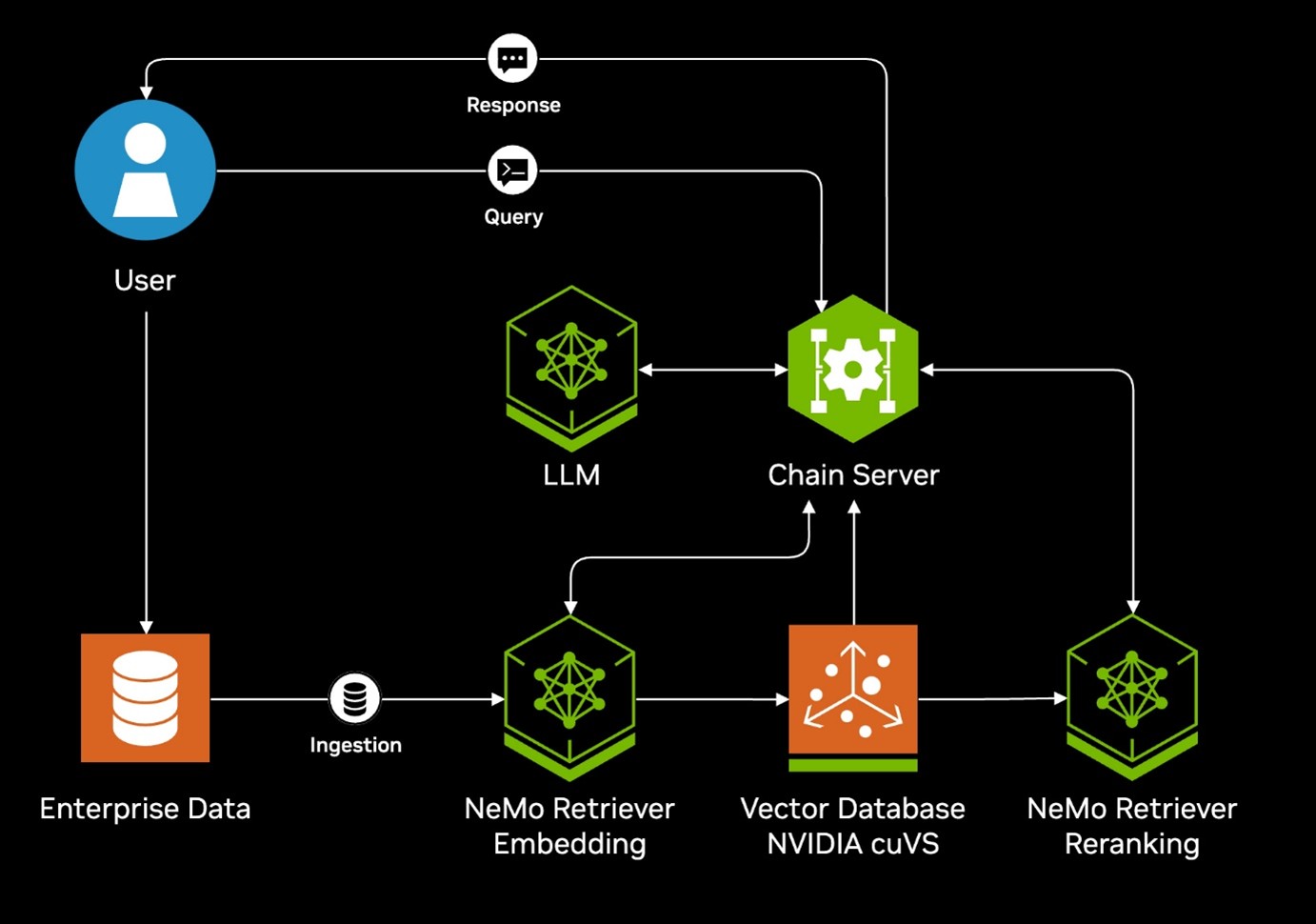
Figure 11. NVIDIA Blueprint Architecture Diagram
As the deployment of AI within the company continues to grow, the AI environment will be adapted to incorporate additional use cases, including Assistants or AI Agents. Additionally, it has the capacity to scale to support an increasing number of Microservices. Ultimately, most companies will maintain multiple AI environments operating simultaneously with their AI Agents working in unison.
The Lenovo Hybrid AI 285 platform has been designed to meet the customer where they are at with their AI application and then seamlessly scale with them through their AI integration. This is achieved through the introduction of the following:
A visual representation of the sizing and scaling of the platform is shown in the figure below.
Entry and AI Starter Kit Deployments
Entry deployment sizings are for customers that want to deploy their initial AI factory with 4-16x GPUs. Entry deployments have one or two SR675 V3 servers, with 8x GPUs per server (AI Compute Nodes). With two servers configured, the two servers are connected directly via the installed NVIDIA ConnectX-7 or NVIDIA BlueField adapters.
If additional networking is required or additional storage is required, then use the AI Starter Kit deployment, which supports up to 3x servers and up to 24x GPUs. The AI Starter Kit uses NVIDIA networking switches and ThinkSystem DM or DG external storage.
The following sections describe these deployments:
Entry sizing
Entry sizing starts with a single AI Compute node, equipped with four GPUs. Such entry deployments are ideal for development, application trials, or small-scale use, reducing hardware costs, control plane overhead, and networking complexity. With all components on one node, management and maintenance are simplified.
Entry sizing can also support two AI Compute nodes, directly connected together and without the need for external networking switches, to scale up to 16 GPUs if fully populated (2 nodes, 8x GPUs per node). The two nodes connect to the rest of your data center using existing networking in your data center.
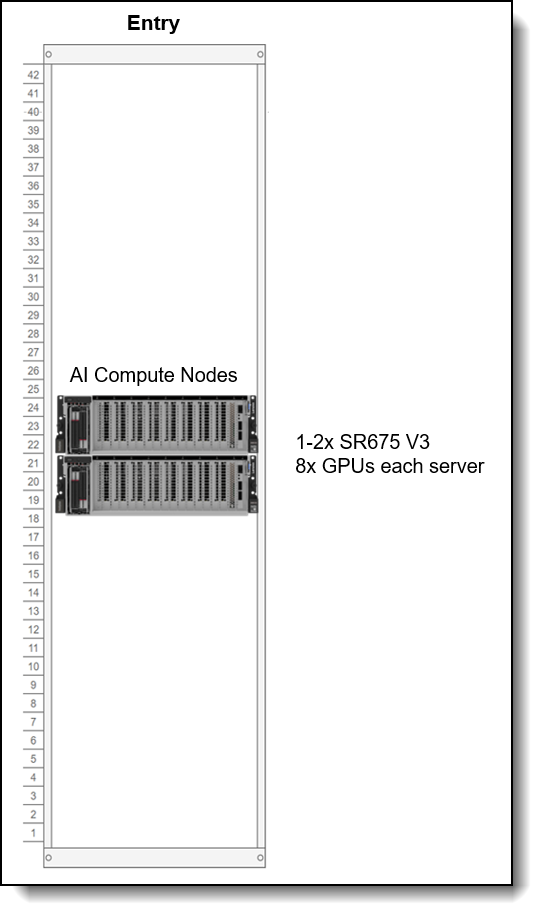
Figure 13. Starter Deployment Rack View
| 4-8x GPUs | 8-16x GPUs | |
|---|---|---|
| Compute | 1x SR675 V3 | 2x SR675 V3 |
| Network adapters per server | Minimum ratio of 1 CX7 per 2 GPUs | Minimum ratio of 1 CX7 per 2 GPUs |
AI Starter Kits
For customers who want storage and/or networking in the Entry sizing, Lenovo has worked to develop AI Starter Kits with up to 24 GPUs across 3 nodes. This sizing is for customers who do not plan to scale above 24 GPUs in the near future but still need an end-to-end solution for compute and storage.
Networking between the nodes is implemented using NVIDIA SN3700 200GbE switches and NVIDIA ConnectX-7 dual-port 200Gb adapters in each server.
Storage is implemented using either ThinkSystem DM or ThinkSystem DG Storage Arrays. Features include:
- Easy to deploy and scale for performance or capacity
- Unified file, object, and block eliminates AI data silos
- High performance NVMe flash and GPUdirect enable faster time to insights
- Confidently use production data to fine tune models with advanced data management features
To configure this sizing on DCSC use the following link: SID0000859
The table and figure below show the hardware involved in various sizes of AI Starter Kit deployments.
Scalable Unit Deployment
For configurations beyond two nodes, it is advisable to deploy a full Scalable Unit along with the necessary network and service infrastructure, providing a foundation for further growth in enterprise use cases.
The fist SU consists of up to four AI Compute nodes, minimum five service nodes, and networking switches. When additional AI Compute Nodes are required, additional SUs of four AI Compute Nodes can be added.
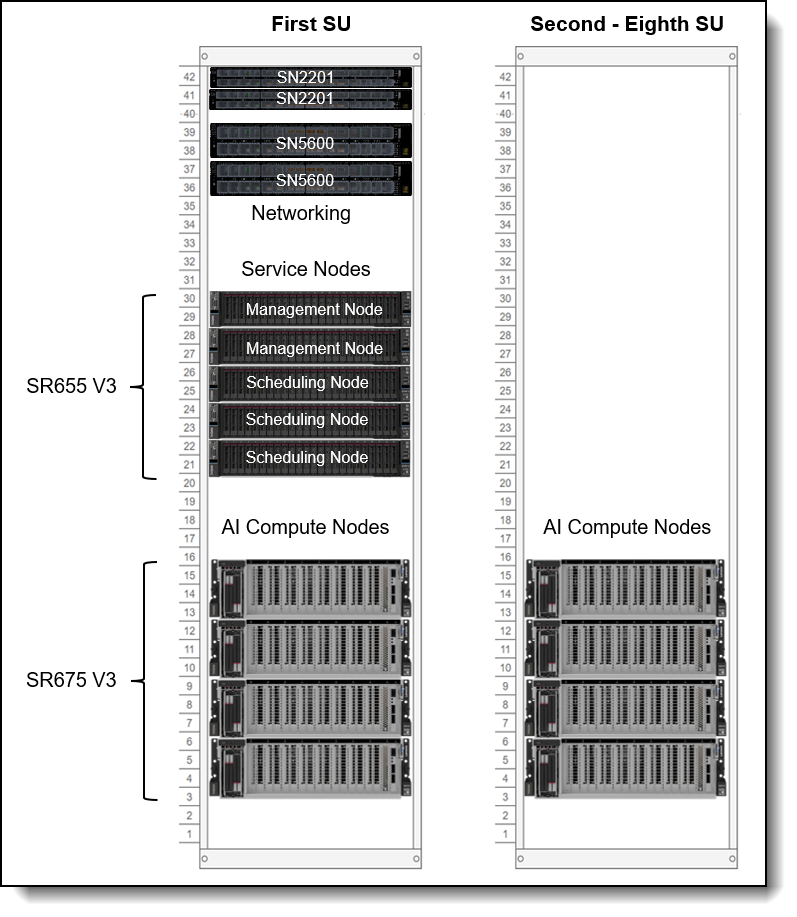
Figure 15. Scalable Unit Deployment
Networking is implemented using NVIDIA SN5600 Spectrum-4 switches and BlueField-3 adapters in the AI Compute Nodes. The combination of these two pieces allows the user to take advantage of NVIDIA’s Spectrum-X networking, an Ethernet platform that delivers the highest performance for AI, machine learning, and natural language processing.
The networking decision depends on whether the platform is designed to support up to five or eight Scalable Units in total, and whether it will handle exclusively inference workloads or also encompass future fine-tuning and re-training activities. Subsequently, the solution can be expanded seamlessly without downtime by incorporating additional Scalable Units, ultimately reaching a total of five or eight as needed.
Performance
Performance of the Lenovo Hybrid AI 285 platform is subject to the specific AI model and application used. The following table lists estimates for common Inference Benchmarks and their expected performance per AI Compute node.
The theoretical performance estimates for 8x H200 NVL listed in the table have been derived by extrapolating the MLPerf Inference v4.1 Closed, Data Center results of the H200 HGX8 data published by NVIDIA, and ratioed with the relative performance specifications provided in the official datasheet comparing the SXM and NVL systems.
AI Software Stack
Deploying AI to production involves implementing multiple layers of software. The process begins with the system management and operating system of the compute nodes, progresses through a workload or container scheduling and cluster management environment, and culminates in the AI software stack that enables delivering AI agents to users.
The following table provides all of the recommended software layers and their roles in the Lenovo Hybrid AI 285 platform.
Note that not all software is required to function; however, this is the recommended stack. For entry and AI Starter Kit deployments, implementing the observability functions provided by Prometheus, Grafana, and NVIDIA NetQ may not be practical.
In the following sections, we take a deeper dive into the software elements:
XClarity System Management
Lenovo XClarity Administrator is a centralized, resource-management solution that simplifies infrastructure management, speeds responses, and enhances the availability of Lenovo server systems and solutions. It runs as a virtual appliance that automates discovery, inventory, tracking, monitoring, and provisioning for server, network, and storage hardware in a secure environment.
Linux Operating System
The AI Compute nodes are deployed with Linux. Traditionally Canonical Ubuntu is the default choice for AI environments with its optimizations across all prominent AI hardware platforms and up to 12 years of security maintenance, but Lenovo Hybrid AI platforms support Red Hat Enterprise Linux (RHEL) as alternative choice.
Container Orchestration
Canonical Ubuntu Pro comes with Kubernetes, the leading AI container deployment and workload management tool in the market, which can be used for edge and centralized data center deployments.
Canonical Kubernetes is used across industries for mission critical workloads, and uniquely offers up to 12 years of security for those customers who cannot, or choose not to upgrade their Kubernetes versions.
MicroK8s is the easiest and fastest way to get Kubernetes up and running. With self-healing high availability, transactional OTA updates and secure sandboxed kubelet environments, MicroK8s is recommended for the entry and AI Starter Kit deployments.
When implementing a Scalable Unit Deployment and above Ubuntu Charmed Kubernetes is used.
When choosing Red Hat for the Operating System, Red Hat OpenShift as the matching Kubernetes implementation is required.
Data and AI Applications
Canonical’s Ubuntu Pro includes a portfolio of open source applications in the data and AI space including leading projects for ML space with Kubeblow and MLFlow, big data and database with Spark, Kafka, PostgreSQL, Mongo and others. Ubuntu Pro enables customers on their open source AI journey to simplify deployment and maintenance of these applications and provides security maintenance.
NVIDIA AI Enterprise
The Lenovo Hybrid AI 285 platform is designed for NVIDIA AI Enterprise, which is a comprehensive suite of artificial intelligence and data analytics software designed for optimized development and deployment in enterprise settings.
Tip: Entitlement to NVIDIA AI Enterprise for 5 years is included with the NVIDIA H200 NVL PCIe GPU.
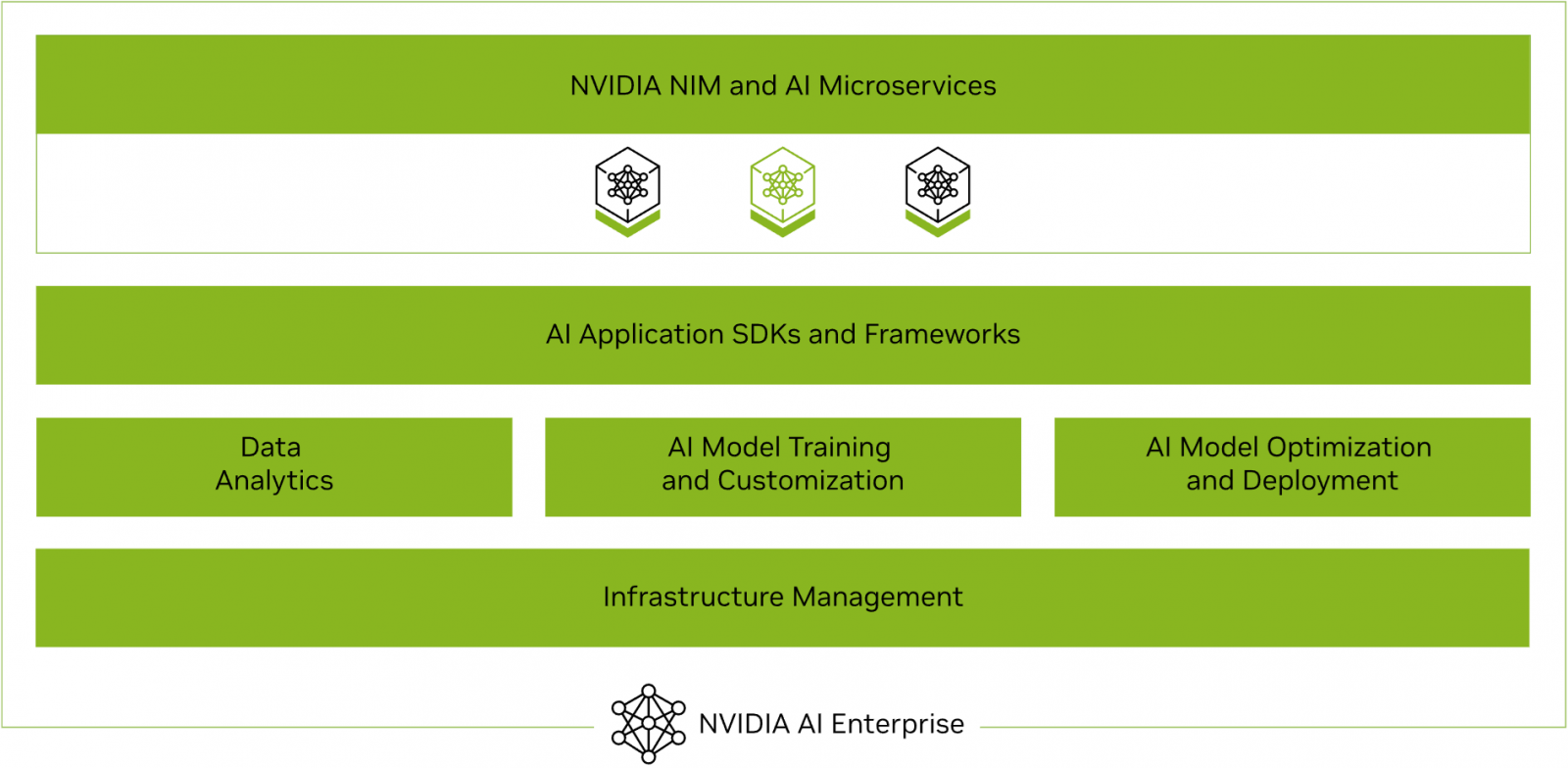
Figure 16. NVIDIA AI Enterprise software stack
NVIDIA AI Enterprise includes workload and infrastructure management software known as Base Command Manager. This software provisions the AI environment, incorporating the components such as the Operating System, Kubernetes (K8S), GPU Operator, and Network Operator to manage the AI workloads.
Additionally, NVIDIA AI Enterprise provides access to ready-to-use open-sourced containers and frameworks from NVIDIA like NVIDIA NeMo, NVIDIA RAPIDS, NVIDIA TAO Toolkit, NVIDIA TensorRT and NVIDIA Triton Inference Server.
- NVIDIA NeMo is an end-to-end framework for building, customizing, and deploying enterprise-grade generative AI models; NeMo lets organizations easily customize pretrained foundation models from NVIDIA and select community models for domain-specific use cases.
- NVIDIA RAPIDS is an open-source suite of GPU-accelerated data science and AI libraries with APIs that match the most popular open-source data tools. It accelerates performance by orders of magnitude at scale across data pipelines.
- NVIDIA TAO Toolkit simplifies model creation, training, and optimization with TensorFlow and PyTorch and it enables creating custom, production-ready AI models by fine-tuning NVIDIA pretrained models and large training datasets.
- NVIDIA TensorRT, an SDK for high-performance deep learning inference, includes a deep learning inference optimizer and runtime that delivers low latency and high throughput for inference applications. TensorRT is built on the NVIDIA CUDA parallel programming model and enables you to optimize inference using techniques such as quantization, layer and tensor fusion, kernel tuning, and others on NVIDIA GPUs. https://developer.nvidia.com/tensorrt-getting-started
- NVIDIA TensorRT-LLM is an open-source library that accelerates and optimizes inference performance of the latest large language models (LLMs). TensorRT-LLM wraps TensorRT’s deep learning compiler and includes optimized kernels from FasterTransformer, pre- and post-processing, and multi-GPU and multi-node communication. https://developer.nvidia.com/tensorrt
- NVIDIA Triton Inference Server optimizes the deployment of AI models at scale and in production for both neural networks and tree-based models on GPUs.
It also provides full access to the NVIDIA NGC catalogue, a collection of tested enterprise software, services and tools supporting end-to-end AI and digital twin workflows and can be integrated with MLOps platforms such as ClearML, Domino Data Lab, Run:ai, UbiOps, and Weights & Biases.
Finally, NVIDIA AI Enterprise introduced NVIDIA Inference Microservices (NIM), a set of performance-optimized, portable microservices designed to accelerate and simplify the deployment of AI models. Those containerized GPU-accelerated pretrained, fine-tuned, and customized models are ideally suited to be self-hosted and deployed on the Lenovo Hybrid AI 285 platform.
The ever-growing catalog of NIM microservices contains models for a wide range of AI use cases, from chatbot assistants to computer vision models for video processing. The image below shows some of the NIM microservices, organized by use case.
Storage Connectivity
Lenovo Hybrid AI platforms do not include storage but do interface with any storage technology that is validated by NVIDIA for NVIDIA OVX or certified by the NVIDIA Certified program.
Lenovo Storage validated by NVIDIA includes: Lenovo DM Series, Lenovo DG Series, Lenovo ThinkAgile HX series with Nutanix and ThinkAgile VX series with VMware, and Lenovo DSS-G for IBM Storage Scale. Lenovo is a qualified hardware platform for Cloudian, DDN, and WEKA.
The storage directly attached to the AI platform primarily hosts the vector database supporting data retrieval for Retrieval-Augmented Generation (RAG) applications. Additionally, it functions as high-performance storage for retraining or fine-tuning models.
The Converged Network connects to the Storage with up to 20 Ethernet connections at 200Gb/s for up to five Scalable Units (SU) or 32 Ethernet connections at 200Gb/s for up to eight SUs. This setup guarantees a minimum bandwidth of 12.5Gb/s per GPU. The connected storage system should be configured to support this bandwidth requirement per GPU accordingly.
Tip: For Enterprise environments that currently utilize NetApp, a leading provider in Enterprise Storage, the Lenovo Hybrid AI platforms offer the perfect compatible compute environment for Netapp AIPod™ as referenced by the NetApp Verified Architecture “NetApp AI Pod with Lenovo”
ThinkSystem DM & DG Series Storage
For enterprise organizations AI applications are treated as any other workload and require the same data management and enterprise data security features. The new DM7200F and DG5200 platforms provide all flash storage that prepares your infrastructure and data for AI workloads and are included as the storage layer in the AI Starter Kits.
Benefits of DM & DG storage for GenAI & RAG:
- Enterprise Security features including autonomous ransomware protection
- Deduplication and compression
- All flash performance
- Flexible scaling
- Unified file, object, and block eliminates data silos
Content-Aware IBM Storage Scale
Lenovo Hybrid AI platforms will integrate with Content-Aware IBM Storage Scale (CAS) to enhance the value of GenAI applications by enabling semantic understanding of data at the storage layer.
Frontier large language models have incorporated most of the world’s publicly available data, but less than 1% of enterprise data are represented in them. RAG is a popular technique for vectorizing data so that it can be used by these models, but it has limitations. Most RAG implementations suffer from stale data, high costs, security issues, and operational complexity. These challenges are addressed by CAS though the deep integration of the vector processing pipeline within the parallel file system, minimizing data movement and latency, resulting in efficiency gains.
CAS provides automated processing of unstructured data for use in RAG applications using NVIDIA NIMs and the NVIDIA Multi-Modal PDF Data Extraction blueprint. The Storage Scale parallel file system provides shared storage optimized for NVIDIA NIM inferencing operations facilitating scale out processing with extreme efficiency.
CAS runs on the 2-8-5 AI compute nodes and uses IBM Storage Scale Container Native (CNSA) to attach to an external IBM Storage Scale SDS file system like Lenovo Distributed Storage Solution for IBM Storage Scale (DSS-G)
IBM Storage Scale Active File Manager (AFM) may be used to ingest data from external S3 data sources into the RAG pipeline, and in future releases integrate with most any 3rd party storage system, bringing data vectorization to a client’s existing environment without the need for an expensive rip and replace. Customers may also ingest data residing on the Storage Scale filesystem into the RAG pipeline. In addition, CAS leverages AFM for incremental data ingest, CNSA for scale out, load balancing, and redundancy. The vector database and other data derivatives are contained within the storage layer, greatly reducing infrastructure requirements when compared to the current industry practice of maintaining the vectors in memory.
These and other innovations provide customers with faster time to insights, reduced costs, improved performance, and simplified operations. Combining the benefits of CAS with Lenovo EveryScale delivers a comprehensive, storage and compute optimized, turnkey solution for enterprises to extract value from GenAI and Agentic AI applications leveraging the latent power of their unique enterprise data.
Lenovo AI Center of Excellence
In addition to the choice of utilizing Lenovo EveryScale Infrastructure framework for the Enterprise AI platform to ensure tested and warranted interoperability, Lenovo operates an AI Lab and CoE at the headquarters in Morrisville, North Carolina, USA to test and enable AI applications and use cases on the Lenovo EveryScale AI platform.
The AI Lab environment allows customers and partners to execute proof of concepts for their use cases or test their AI middleware or applications. It is configured as a diverse AI platform with a range of systems and GPU options, including NVIDIA L40S and NVIDIA HGX8 H200.
The software environment utilizes Canonical Ubuntu Linux along with Canonical MicroK8s to offer a multi-tenant Kubernetes environment. This setup allows customers and partners to schedule their respective test containers effectively.
Lenovo AI Innovators
Lenovo Hybrid AI platforms offer the necessary infrastructure for a customer’s hybrid AI factory. To fully leverage the potential of AI integration within business processes and operations, software providers, both large and small, are developing specialized AI applications tailored to a wide array of use cases.
To support the adoption of those AI applications, Lenovo continues to invest in and extend its AI Innovators Program to help organizations gain access to enterprise AI by partnering with more than 50 of the industry’s leading software providers.
Partners of the Lenovo AI Innovators Program get access to our AI Discover Labs, where they validate their solutions and jointly support Proof of Concepts and Customer engagements.
LAII provides customers and channel partners with a range of validated solutions across various vertical use cases, such as for Retail or Public Security. These solutions are designed to facilitate the quick and safe deployment of AI solutions that optimally address the business requirements.
The following is a selection of case studies involving Lenovo customers implementing an AI solution:
- Kroeger (Retail) – Reducing Customer friction and loss prevention
- Peak (Logistics) – Streamlining supply chain ops for fast and efficient deliveries
- Bikal (AI at Scale) – Delivering shared AI platform for education
- VSAAS (Smart Cities) – Enabling accurate and effective public security
Lenovo Validated Designs
Lenovo Validated Designs (LVDs) are pre-tested, optimized solution designs enabling reliability, scalability, and efficiency in specific workloads or industries. These solutions integrate Lenovo hardware like ThinkSystem servers, storage, and networking with software and best practices to solve common IT challenges. Developed with technology partners such as VMware, Intel, and Red Hat, LVDs ensure performance, compatibility, and easy deployment through rigorous validation.
Lenovo Validated Designs are intended to simplify the planning, implementation, and management of complex IT infrastructures. They provide detailed guidance, including architectural overviews, component models, deployment considerations, and bills of materials, tailored to specific use cases such as artificial intelligence (AI), big data analytics, cloud computing, virtualization, retail, or smart manufacturing. By offering a pretested solution, LVDs aim to reduce risk, accelerate deployment, and assist organizations in achieving faster time-to-value for their IT investments.
Lenovo Hybrid AI platforms act as infrastructure frameworks for LVDs addressing data center-based AI solutions. They provide the hardware/software reference architecture, optionally Lenovo EveryScale integrated solution delivery method, and general sizing guidelines.
AI Services
Lenovo Hybrid AI platforms solutions are specifically designed to enable broad adoption in the Enterprise supported by Lenovo’s powerful IT partner ecosystem.
In addition to custom deployments, as the foundation of NVIDIA’s Enterprise Reference Architecture, it is fully compatible with NVIDIA Blueprints for agentic and generative AI use cases.
This enables both Lenovo AI Partners and Lenovo Professional Services to accelerate deployment and provide enterprises with the fastest time to production.
Lenovo Hybrid AI Advantage enables customers to overcome the barriers they face in realizing ROI from AI investments by providing critical expertise needed to accelerate business outcomes. Leveraging a responsible approach to AI, Lenovo AI expertise, Lenovo’s advanced partner ecosystem and industry leading technology we help customers realize the benefits of AI faster.
AI Discover Workshop
Lenovo AI Discover Workshops help customers visualize and map out their strategy and resources for AI adoption to rapidly unlock real business value. Lenovo’s experts assess the organization’s AI readiness across security, people, technology, and process – a proven methodology – with recommendations that put customers on a path to AI success. With a focus on real outcomes, AI Discover leverage proven frameworks, processes and policies to deliver a technology roadmap that charts the path to AI success.
AI Fast Start
With customers looking to unlock the transformative power of AI, Lenovo AI Fast Start empowers customers to rapidly build and deploy production-ready AI solutions tailored to their needs. Optimized for NVIDIA AI Enterprise and leveraging accelerators like NVIDIA NIMs, Lenovo AI Fast Start accelerates use case development and platform readiness for AI deployment at scale allowing customers to go from concept to production ready deployment in just weeks. Easy to use containerized and optimized inference engines for popular NVIDIA AI Foundation models empower developers to deliver results. AI Fast Start provides access to AI Experts, platforms and technologies supporting onsite and remote models to achieve business objectives.
Lenovo TruScale
Lenovo TruScale XaaS is your set of flexible IT services that makes everything easier. Streamline IT procurement, simplify infrastructure and device management, and pay only for what you use – so your business is free to grow and go anywhere.
Lenovo TruScale is the unified solution that gives you simplified access to:
- The industry’s broadest portfolio – from pocket to cloud – all delivered as a service
- A single-contract framework for full visibility and accountability
- The global scale to rapidly and securely build teams from anywhere
- Flexible fixed and metered pay-as-you-go models with minimal upfront cost
- The growth-driving combination of hardware, software, infrastructure, and solutions – all from one single provider with one point of accountability.
For information about Lenovo TruScale offerings that are available in your region, contact your local Lenovo sales representative or business partner.
Lenovo Financial Services
Why wait to obtain the technology you need now? No payments for 90 days and predictable, low monthly payments make it easy to budget for your Lenovo solution.
- Flexible
Our in-depth knowledge of the products, services and various market segments allows us to offer greater flexibility in structures, documentation and end of lease options.
- 100% Solution Financing
Financing your entire solution including hardware, software, and services, ensures more predictability in your project planning with fixed, manageable payments and low monthly payments.
- Device as a Service (DaaS)
Leverage latest technology to advance your business. Customized solutions aligned to your needs. Flexibility to add equipment to support growth. Protect your technology with Lenovo's Premier Support service.
- 24/7 Asset management
Manage your financed solutions with electronic access to your lease documents, payment histories, invoices and asset information.
- Fair Market Value (FMV) and $1 Purchase Option Leases
Maximize your purchasing power with our lowest cost option. An FMV lease offers lower monthly payments than loans or lease-to-own financing. Think of an FMV lease as a rental. You have the flexibility at the end of the lease term to return the equipment, continue leasing it, or purchase it for the fair market value. In a $1 Out Purchase Option lease, you own the equipment. It is a good option when you are confident you will use the equipment for an extended period beyond the finance term. Both lease types have merits depending on your needs. We can help you determine which option will best meet your technological and budgetary goals.
Ask your Lenovo Financial Services representative about this promotion and how to submit a credit application. For the majority of credit applicants, we have enough information to deliver an instant decision and send a notification within minutes.
Bill of Materials - First Scalable Unit
This section provides an example Bill of Materials (BoM) of one Scaleable Unit (SU) deployment with NVIDIA Spectrum-X. This example BoM includes:
- 4x Lenovo ThinkSystem SR675 V3 with 8 × NVIDIA H200 NVL GPUs per server
- 5x Lenovo ThinkSystem SR655 V3
- 2x NVIDIA SN5600 Switches
- 2x NVIDIA SN2201 Switches
Storage is optional and not included in this BoM.
In this section:
ThinkSystem SR675 V3 BoM
ThinkSystem SR655 V3 BoM
NVIDIA SN2201 Switch BoM
Rack Cabinet BoM
Seller training courses
The following sales training courses are offered for employees and partners (login required). Courses are listed in date order.
-
VTT AI: Introducing the Lenovo Hybrid AI 285 Platform with Cisco Networking
2025-11-04 | 36 minutes | Partners Only
DetailsVTT AI: Introducing the Lenovo Hybrid AI 285 Platform with Cisco Networking
The Lenovo Hybrid AI 285 Platform enables enterprises of all sizes to quickly deploy AI infrastructures supporting use cases as either new greenfield environments or as an extension to current infrastructures.
Published: 2025-11-04
This session will describe the hardware architecture changes required to leverage Cisco networking hardware and the Cisco Nexus Dashboard within the Hybrid AI 285 Platform.
Topics include:
- Value propositions for the Hybrid AI 285 platform
- Updates for the Hybrid AI 285 platform
- Leveraging Cisco networking with the 285 platform
- Future plans for the 285 platform
Length: 36 minutes
Course code: DVAI220_PStart the training:
Partner link: Lenovo 360 Learning Center
-
Partner Technical Webinar - Lenovo AI Hybrid Factory offerings
2025-10-13 | 50 minutes | Employees and Partners
DetailsPartner Technical Webinar - Lenovo AI Hybrid Factory offerings
In this 50-minute replay, Pierce Beary, Lenovo Senior AI Solution Manager, review the Lenovo AI Factory offerings for the data center. Pierce showed how Lenovo is simplifying the AI compute needs for the data center with the AI 281, AI 285 and AI 289 platforms based on the NVIDIA AI Enterprise Reference Architecture.
Published: 2025-10-13
Tags: Artificial Intelligence (AI)
Length: 50 minutes
Course code: OCT1025Start the training:
Employee link: Grow@Lenovo
Partner link: Lenovo 360 Learning Center
-
Lenovo VTT Cloud Architecture: Empowering AI Innovation with NVIDIA RTX Pro 6000 and Lenovo Hybrid AI Services
2025-09-18 | 68 minutes | Employees Only
DetailsLenovo VTT Cloud Architecture: Empowering AI Innovation with NVIDIA RTX Pro 6000 and Lenovo Hybrid AI Services
Join Dinesh Tripathi, Lenovo Technical Team Lead for GenAI and Jose Carlos Huescas, Lenovo HPC & AI Product Manager for an in-depth, interactive technical webinar. This session will explore how to effectively position the NVIDIA RTX PRO 6000 Blackwell Server Edition in AI and visualization workflows, with a focus on real-world applications and customer value.
Published: 2025-09-18
We’ll cover:
- NVIDIA RTX PRO 6000 Blackwell Overview: Key specs, performance benchmarks, and use cases in AI, rendering, and simulation.
- Positioning Strategy: How to align NVIDIA RTX PRO 6000 with customer needs across industries like healthcare, manufacturing, and media.
- Lenovo Hybrid AI 285 Services: Dive into Lenovo’s Hybrid AI 285 architecture and learn how it supports scalable AI deployments from edge to cloud.
Whether you're enabling AI solutions or guiding customers through infrastructure decisions, this session will equip you with the insights and tools to drive impactful conversations.
Tags: Industry solutions, SMB, Services, Technical Sales, Technology solutions
Length: 68 minutes
Course code: DVCLD227Start the training:
Employee link: Grow@Lenovo
-
VTT AI: Introducing The Lenovo Hybrid AI 285 Platform with Cisco Networking
2025-08-26 | 54 minutes | Employees Only
DetailsVTT AI: Introducing The Lenovo Hybrid AI 285 Platform with Cisco Networking
Please view this session as Pierce Beary, Sr. AI Solution Manager, ISG ESMB Segment and AI explains:
Published: 2025-08-26
- Value propositions for the Hybrid AI 285 platform
- Updates for the Hybrid AI 285 platform
- Leveraging Cisco networking with the 285 platform
- Future plans for the 285 platform
Tags: Artificial Intelligence (AI), Technical Sales, ThinkSystem
Length: 54 minutes
Course code: DVAI220Start the training:
Employee link: Grow@Lenovo
-
VTT AI: Introducing the Lenovo Hybrid AI 285 Platform April 2025
2025-04-30 | 60 minutes | Employees Only
DetailsVTT AI: Introducing the Lenovo Hybrid AI 285 Platform April 2025
The Lenovo Hybrid AI 285 Platform enables enterprises of all sizes to quickly deploy AI infrastructures supporting use cases as either new greenfield environments or as an extension to current infrastructures. The 285 Platform enables the use of the NVIDIA AI Enterprise software stack. The AI Hybrid 285 platform is the perfect foundation supporting Lenovo Validated Designs.
Published: 2025-04-30
• Technical overview of the Hybrid AI 285 platform
• AI Hybrid platforms as infrastructure frameworks for LVDs addressing data center-based AI solutions.
• Accelerate AI adoption and reduce deployment risks
Tags: Artificial Intelligence (AI), Nvidia, Technical Sales, Lenovo Hybrid AI 285
Length: 60 minutes
Course code: DVAI215Start the training:
Employee link: Grow@Lenovo
Related publications and links
For more information, see these resources:
- Lenovo EveryScale support page:
https://datacentersupport.lenovo.com/us/en/solutions/ht505184 - x-config configurator:
https://lesc.lenovo.com/products/hardware/configurator/worldwide/bhui/asit/x-config.jnlp - Implementing AI Workloads using NVIDIA GPUs on ThinkSystem Servers:
https://lenovopress.lenovo.com/lp1928-implementing-ai-workloads-using-nvidia-gpus-on-thinksystem-servers - Making LLMs Work for Enterprise Part 3: GPT Fine-Tuning for RAG:
https://lenovopress.lenovo.com/lp1955-making-llms-work-for-enterprise-part-3-gpt-fine-tuning-for-rag - Lenovo to Deliver Enterprise AI Compute for NetApp AIPod Through Collaboration with NetApp and NVIDIA
https://lenovopress.lenovo.com/lp1962-lenovo-to-deliver-enterprise-ai-compute-for-netapp-aipod-nvidia
Trademarks
Lenovo and the Lenovo logo are trademarks or registered trademarks of Lenovo in the United States, other countries, or both. A current list of Lenovo trademarks is available on the Web at https://www.lenovo.com/us/en/legal/copytrade/.
The following terms are trademarks of Lenovo in the United States, other countries, or both:
Lenovo®
From Exascale to EveryScale®
Lenovo Hybrid AI Advantage
ThinkAgile®
ThinkSystem®
XClarity®
The following terms are trademarks of other companies:
AMD and AMD EPYC™ are trademarks of Advanced Micro Devices, Inc.
Intel® is a trademark of Intel Corporation or its subsidiaries.
Linux® is the trademark of Linus Torvalds in the U.S. and other countries.
Microsoft® and Azure® are trademarks of Microsoft Corporation in the United States, other countries, or both.
IBM® is a trademark of IBM in the United States, other countries, or both.
Other company, product, or service names may be trademarks or service marks of others.
Configure and Buy
Full Change History
Changes in the May 19, 2025 update:
- Added NVIDIA RTX PRO 6000 Blackwell Server Edition GPU
- Added AI Starter Kit sizing including description of the ThinkSystem DM and ThinkSystem DG products
Changes in the April 30, 2025 update:
- Added Seller Training Courses
First published: March 19, 2025
Course Detail
Employees Only Content
The content in this document with a is only visible to employees who are logged in. Logon using your Lenovo ITcode and password via Lenovo single-signon (SSO).
The author of the document has determined that this content is classified as Lenovo Internal and should not be normally be made available to people who are not employees or contractors. This includes partners, customers, and competitors. The reasons may vary and you should reach out to the authors of the document for clarification, if needed. Be cautious about sharing this content with others as it may contain sensitive information.
Any visitor to the Lenovo Press web site who is not logged on will not be able to see this employee-only content. This content is excluded from search engine indexes and will not appear in any search results.
For all users, including logged-in employees, this employee-only content does not appear in the PDF version of this document.
This functionality is cookie based. The web site will normally remember your login state between browser sessions, however, if you clear cookies at the end of a session or work in an Incognito/Private browser window, then you will need to log in each time.
If you have any questions about this feature of the Lenovo Press web, please email David Watts at dwatts@lenovo.com.

